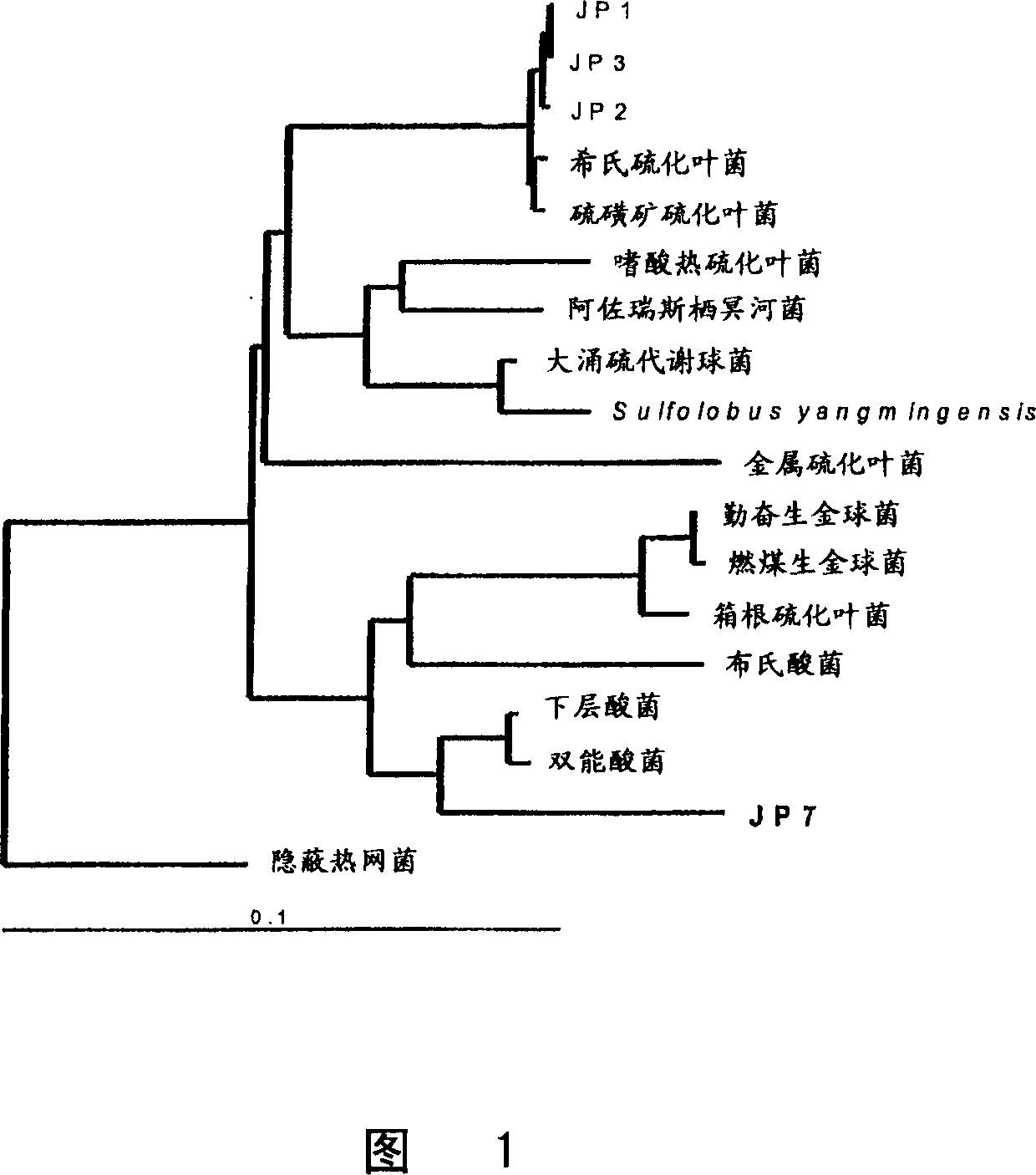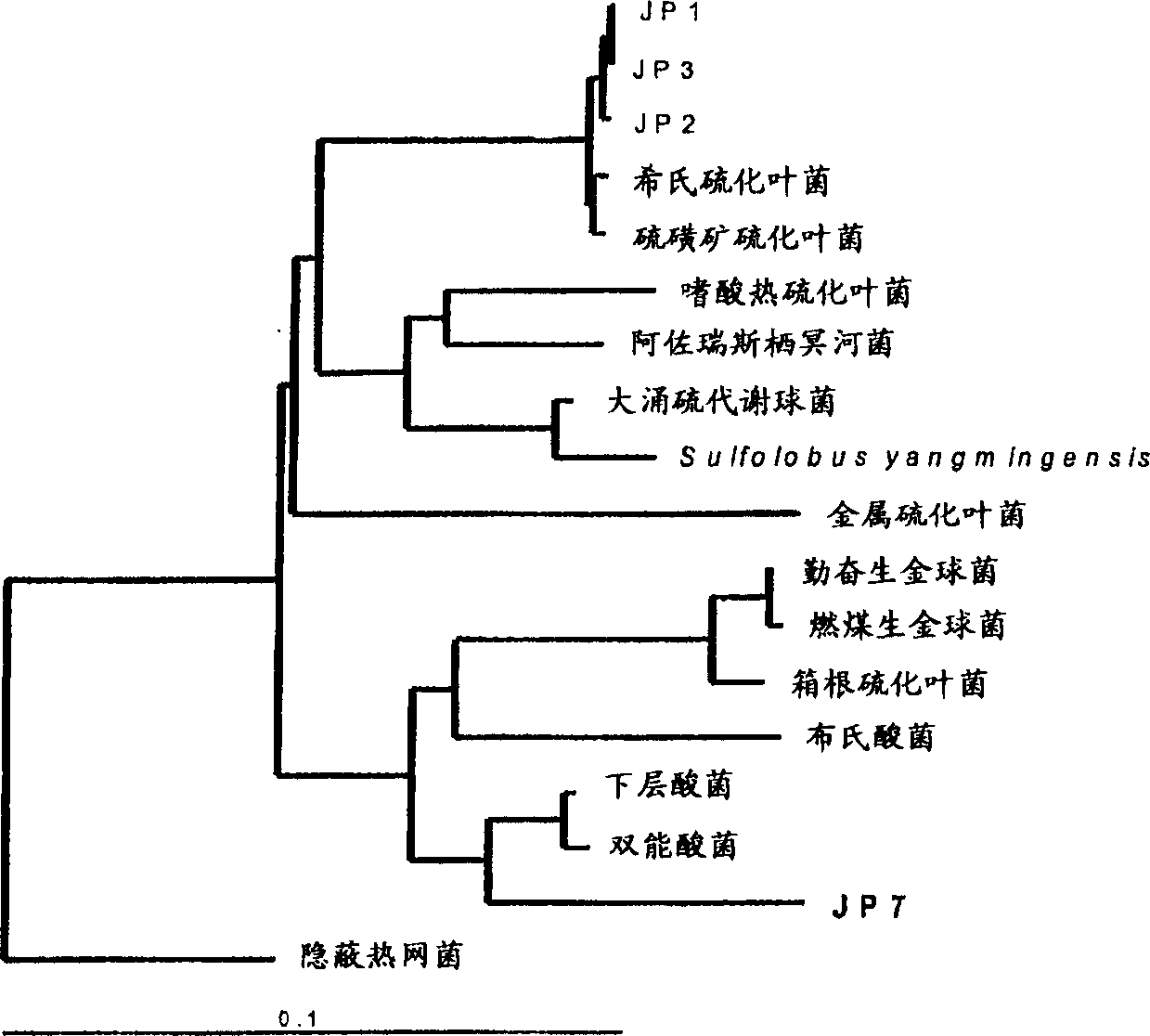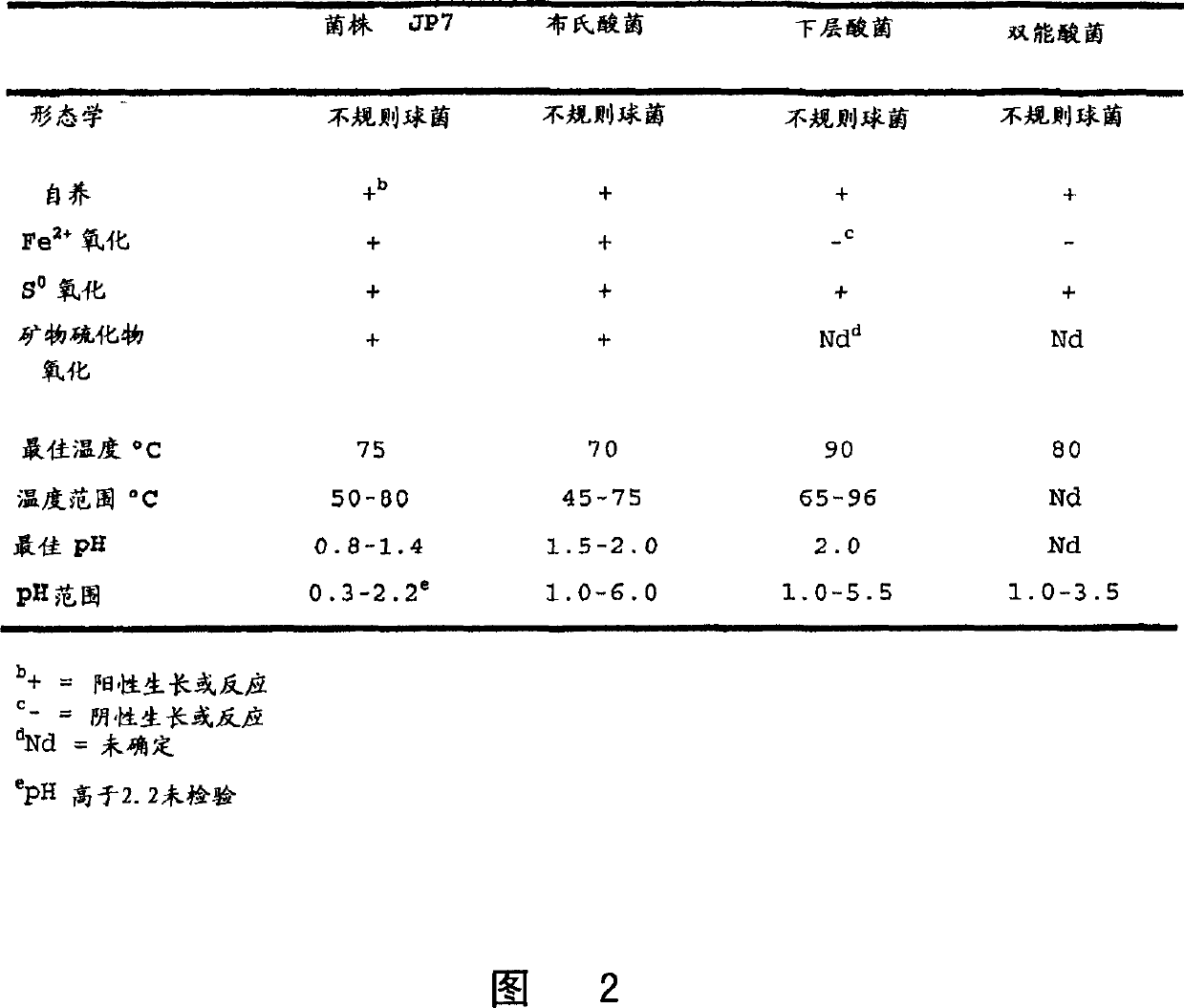Microorganism and method for leaching mineral sulphides
A technology of sulfide and microorganisms, applied in the field of microorganisms, can solve the problems of inhibiting the growth of bioleaching microorganisms and pH drop
- Summary
- Abstract
- Description
- Claims
- Application Information
AI Technical Summary
Problems solved by technology
Method used
Image
Examples
Embodiment 1
[0064] Example 1 Separation and enrichment of JP7
[0065]The culture was successfully enriched on basal medium plus chalcopyrite concentrate and site ore material at pH 0.8 and 70°C, and was subsequently named JP7. The cell morphology of JP7 was similar to that of members of the Sulfolobus group, ie, irregularly shaped cocci with diameters between 0.5 and 1 μm. After repeated subculturing, attempts were made to identify the cultures by 16S rDNA sequencing. The 16S rDNA sequence data obtained did not show evidence of mixed sequence templates or any evidence of chimeric sequences, which could suggest that the cultures were mixed. Based on 16S rDNA sequence data, JP7 is about 94% similar to the aforementioned Acidianus ambivalens, a thermoacidophilic species of archaea. Figure 1 shows the phylogenetic position of JP7 relative to other Sulfolobus members based on 16S rDNA sequence analysis. This analysis indicated that JP7 was either a new species of Acidbacteria or a represen...
Embodiment 2
[0067] Example 2 - Bioleaching of Chalcopyrite Concentrate
[0068] The ability of JP7 to leach chalcopyrite concentrate is shown in Figure 4. A greater percentage of Cu release was obtained by JP7 at pH 0.8 compared to JP2 at pH 1.8, the optimal pH for growth of each of these microorganisms on chalcopyrite respectively. At very low pH 0.8, ferric iron precipitates such as jarosite did not form, resulting in Fe 3+ Concentrations are higher in solution. Considering Fe 3+ is a strong leaching agent, a higher percentage of Cu release is obtained. Likewise, higher concentrations of sulfuric acid at pH 0.8 may also increase the rate of chalcopyrite leaching. The data in Figure 5 represent total iron in solution for each treatment. At pH 1.8, iron was only present in solution at low levels. For the JP2 culture, this was because jarosite precipitates had formed, removing iron from solution. For the uninoculated pH 1.8 control, iron was present in solution only at relatively lo...
PUM
| Property | Measurement | Unit |
|---|---|---|
| particle diameter | aaaaa | aaaaa |
Abstract
Description
Claims
Application Information
 Login to View More
Login to View More - Generate Ideas
- Intellectual Property
- Life Sciences
- Materials
- Tech Scout
- Unparalleled Data Quality
- Higher Quality Content
- 60% Fewer Hallucinations
Browse by: Latest US Patents, China's latest patents, Technical Efficacy Thesaurus, Application Domain, Technology Topic, Popular Technical Reports.
© 2025 PatSnap. All rights reserved.Legal|Privacy policy|Modern Slavery Act Transparency Statement|Sitemap|About US| Contact US: help@patsnap.com



